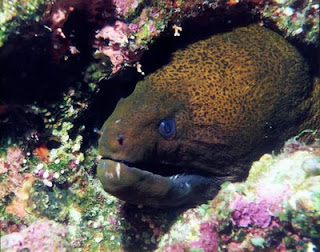 On December 26, Boxing Day, fine weather, and the need for exercise determined another hike to the popular B-29 crash site was in order. A 30 minute hike with a few detours took us on site.
On December 26, Boxing Day, fine weather, and the need for exercise determined another hike to the popular B-29 crash site was in order. A 30 minute hike with a few detours took us on site.The B-29 crashed on the west side of Mount Tapochao during the night of August 27, 1945, just 12 days after hostilities ceased in the Pacific. The B-29 was returning from a POW supply support mission after picking up cargo parachutes at Florida Blanca Air Field in the Phillipines. The crash occurred during a second approach to Isley Field on Saipan. The first landing attempt was aborted due to night instrument problems, bad visibility, and stormy conditions. Sadly, there were no survivors among the 10 crew members. Observations show visitors to the site have given respect and left the site intact. Crew member list and additional information can be researched on websites http://www.20thaf.org/ and www.315bw.org/memoriam.htm
 The B-29 was a model B-29B-45-BA built at the Bell-Atlanta aircraft plant. It was registered as # 44-83899 and assigned to the 20th Air Force, 402nd Bomb Squadron, 502nd Bomb Group, 315th Bomb Wing.
The B-29 was a model B-29B-45-BA built at the Bell-Atlanta aircraft plant. It was registered as # 44-83899 and assigned to the 20th Air Force, 402nd Bomb Squadron, 502nd Bomb Group, 315th Bomb Wing. The debris field is extensive with parts strewn over a large area indicating a high speed impact. This could be part of the air injection supercharger from one the engines. It is truly amazing how a number of parts show little corrosion after 63 years in a tropical environment.
The debris field is extensive with parts strewn over a large area indicating a high speed impact. This could be part of the air injection supercharger from one the engines. It is truly amazing how a number of parts show little corrosion after 63 years in a tropical environment. We located only two of the engines on this hike. According to the plane specifications the four engines are noted as Wright Cyclone R-3350-23 with 2,200 horsepower per engine. The props are sixteen feet eight inches in diameter. Note the yellow paint still visible on the prop tips.
We located only two of the engines on this hike. According to the plane specifications the four engines are noted as Wright Cyclone R-3350-23 with 2,200 horsepower per engine. The props are sixteen feet eight inches in diameter. Note the yellow paint still visible on the prop tips.



















































